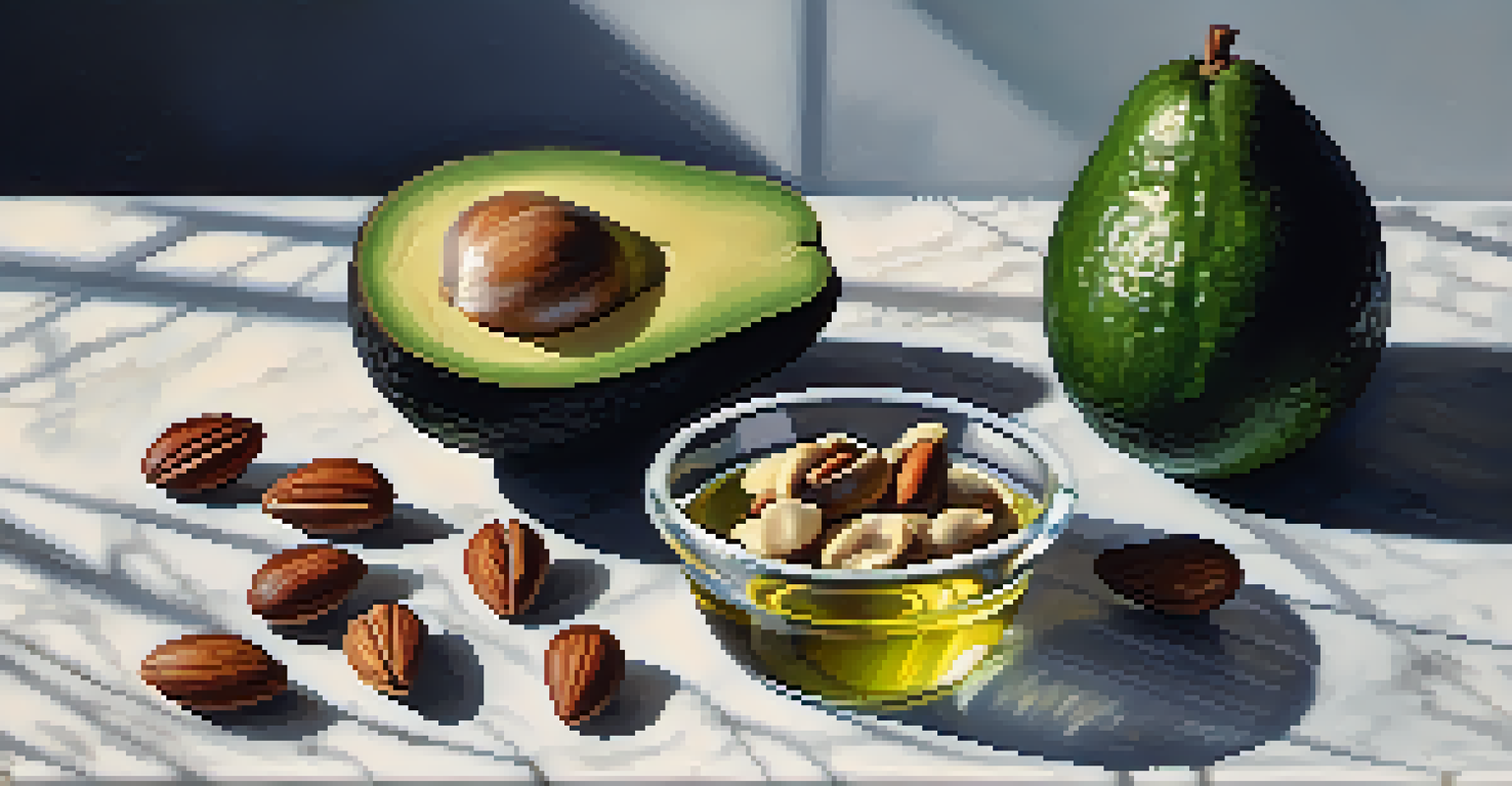Balancing Flavor and Nutrition in Your Cooking Classes

Understanding the Importance of Flavor and Nutrition
Flavor and nutrition are the two pillars of any great dish. While flavor tantalizes the taste buds, nutrition fuels our bodies and keeps us healthy. In cooking classes, it's crucial to teach students how to appreciate both elements, ensuring their meals are not just delicious but also beneficial.
Let food be thy medicine and medicine be thy food.
Think of cooking as a balancing act, where flavor is the performer and nutrition is the stage. When both work in harmony, the result is a meal that delights the senses while nourishing the body. This balance is especially important in today's world, where people are becoming more health-conscious.
Incorporating this understanding into your cooking classes will empower students to make smarter food choices. They will learn that a meal can be both satisfying and wholesome, leading to a more enjoyable cooking experience.
Choosing Ingredients that Enhance Flavor and Nutrition
The key to balancing flavor and nutrition lies in your ingredient choices. Fresh, whole foods are often packed with nutrients and natural flavors, making them the best options for your dishes. For instance, using seasonal vegetables not only boosts the nutritional content but also enhances the taste of your meals.

Imagine a vibrant summer salad made with ripe tomatoes, crisp cucumbers, and fragrant herbs. Each ingredient adds its own unique flavor profile while contributing essential vitamins and minerals. This is the kind of synergy that can be taught in cooking classes to inspire students.
Balance Flavor and Nutrition
Understanding how to harmonize flavor and nutrition is essential for creating meals that are both delicious and healthful.
Encouraging students to explore local markets can also open their eyes to the diversity of ingredients available. The more they experiment with different foods, the better they will understand how to balance nutrition and flavor in their cooking.
Techniques for Enhancing Flavor Without Extra Calories
Sometimes, flavor can seem elusive, especially when trying to maintain a healthy diet. However, there are many techniques that can enhance flavor without adding extra calories. For example, roasting vegetables caramelizes their natural sugars, resulting in a richer taste without the need for added fats.
You are what you eat, so don't be fast, cheap, easy, or fake.
Another great method is to use herbs and spices. These flavorful additions can pack a punch without contributing any calories. Teaching students how to properly season their dishes can make a significant difference in the overall taste and satisfaction of their meals.
In your cooking classes, demonstrate how to create flavorful sauces and dressings using low-calorie ingredients. This not only shows students how to elevate their meals but also reinforces the idea that healthy cooking can be delightful.
Incorporating Whole Grains for Flavor and Nutrition
Whole grains are an excellent way to boost the nutritional content of meals while adding depth of flavor. Unlike refined grains, whole grains retain their bran and germ, which means they are higher in fiber, vitamins, and minerals. Quinoa, brown rice, and farro can all add unique textures and tastes to dishes.
Imagine a hearty grain bowl featuring a base of farro topped with colorful roasted vegetables and a zesty dressing. This not only looks appealing but also provides a well-rounded meal packed with nutrients. Teaching students to incorporate whole grains into their cooking can inspire them to create more balanced dishes.
Choose Fresh Ingredients
Incorporating fresh, whole foods enhances both the taste and nutritional value of dishes, making meals more enjoyable.
In cooking classes, you can explore various ways to introduce whole grains to traditional recipes. This approach allows students to experience firsthand how these ingredients can enhance both flavor and nutrition.
The Role of Healthy Fats in Flavor and Nutrition
Healthy fats are often misunderstood, but they play a vital role in both flavor and nutrition. Ingredients like olive oil, avocados, and nuts not only provide essential fatty acids but also enhance the taste of dishes. In cooking classes, it's important to teach students the difference between healthy fats and unhealthy ones.
For instance, a drizzle of olive oil can elevate a simple salad or pasta dish, adding richness and depth. Meanwhile, nuts can provide a satisfying crunch, while also delivering beneficial nutrients. By incorporating these healthy fats into their meals, students can create flavorful dishes that are also good for their health.
Encourage your students to experiment with different types of healthy fats in their cooking. This exploration can lead to delicious discoveries and a greater understanding of how to balance flavor and nutrition.
Creating Balanced Meals Through Portion Control
Portion control is an essential aspect of balancing flavor and nutrition in cooking. Teaching students how to serve appropriate portions can help them enjoy their meals without overindulging. This approach encourages mindfulness and allows them to savor the flavors of their dishes.
Visual aids can be useful in illustrating proper portion sizes. For example, using the plate method, where half the plate is filled with vegetables, a quarter with lean protein, and a quarter with whole grains, can help students visualize balanced meals. This method simplifies meal planning and promotes healthier eating habits.
Encourage Kitchen Experimentation
Promoting experimentation in the kitchen helps students discover new flavors and techniques, fostering creativity and confidence in their cooking.
In your classes, consider demonstrating how to create balanced meals using this method. By showing students how to plate their food thoughtfully, they can develop a greater awareness of their eating habits and make healthier choices.
Encouraging Experimentation in Flavor and Nutrition
One of the best ways to balance flavor and nutrition is to encourage experimentation in the kitchen. Allowing students to try new ingredients and cooking techniques can foster creativity and lead to delicious discoveries. This freedom can help them understand how to create meals that are both satisfying and nutritious.
For example, challenge your students to create a dish using a specific healthy ingredient, such as lentils or sweet potatoes. This hands-on experience not only builds their confidence but also expands their culinary repertoire. They may surprise themselves with the flavors they can achieve.

Incorporating taste tests into your classes can also be a fun way to explore flavor combinations. By encouraging students to taste and adjust their dishes as they cook, they will learn to develop their palates and understand the balance between flavor and nutrition.